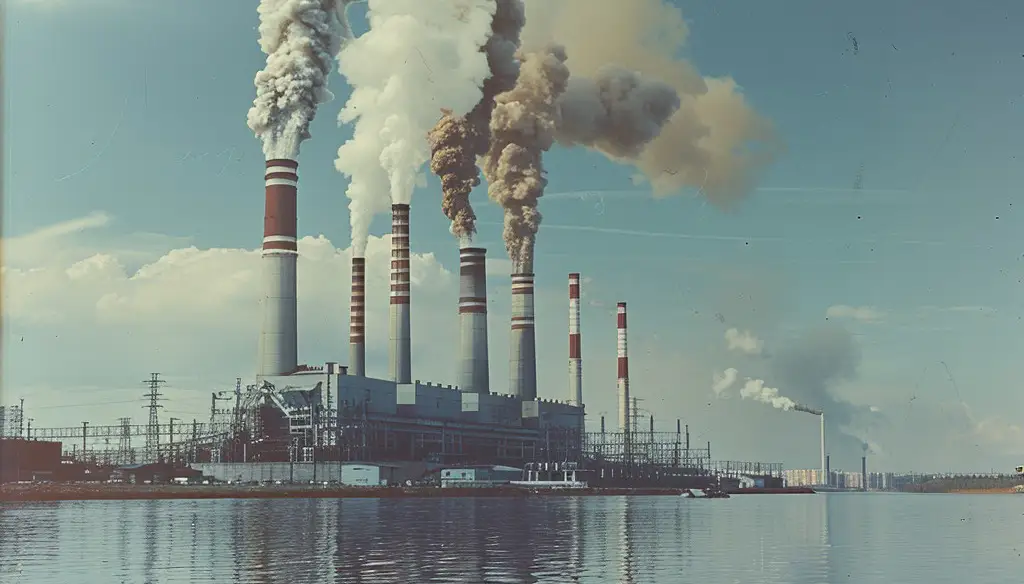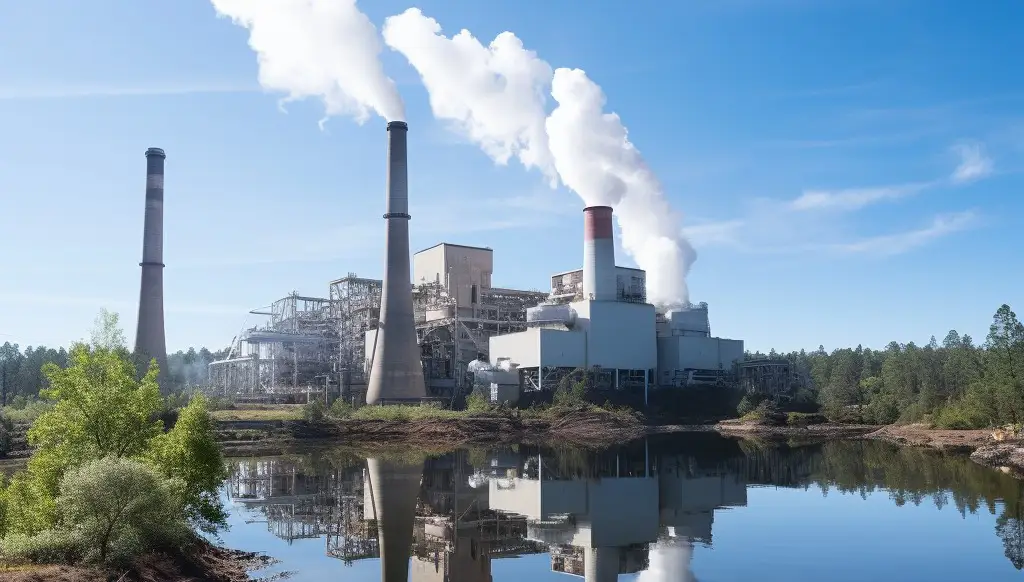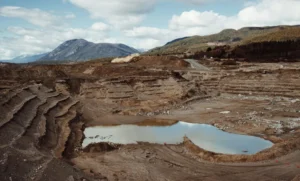Thermal Pollution
Thermal pollution, also known as “thermal enrichment,” occurs when human activities alter the natural temperature of a water body.
Thermal pollution occurs when water bodies, such as rivers, lakes, or oceans, experience a sudden or gradual rise in temperature. This increase in heat can have serious effects on the environment and the ecosystems living within these waters.
Thermal pollution can highly disturb aquatic ecosystems, leading to harmful consequences for fish, plants, and other organisms.
Industries and power plants are usually major contributors to thermal pollution, as they discharge heated wastewater into nearby water bodies.
Facts on Thermal Pollution
- Thermal pollution is responsible for killing millions of fish every year, as they cannot survive in water that is too warm.
- The temperature of water bodies near power plants can be 10-15 degrees higher than the natural temperature.
- Thermal pollution is a major threat to coral reefs, which are highly sensitive to temperature changes.
What is Thermal Pollution

Define Thermal Pollution
Thermal pollution is the degradation of water quality by processes that increase its temperature.
Detailed Definition and Importance
Thermal pollution is the human-caused increase in temperature of a water body, mostly caused by the discharge of heated runoff from industrial or power plant processes.
It happens when industries, power plants, or other sources release heat into water bodies, raising the water temperature. This change in temperature can harm aquatic life and disturb the natural balance of the ecosystem.
Thermal Pollution Examples
Common examples include water discharged from industrial cooling processes, heated runoff from urban areas, and agricultural activities that release warm water into nearby bodies of water.
Why is Thermal Pollution a Problem?
Thermal pollution is a problem because it can cause immediate and long-term damage to the environment.
It harms aquatic life, reduces biodiversity, and can lead to the death of fish and other species that cannot survive in warmer temperatures.
It also affects the quality of water, making it less suitable for drinking and other uses.
Causes of Thermal Pollution
Thermal pollution is primarily caused by industrial activities, power generation, and urban runoff, leading to a significant increase in water temperatures.
Thermal pollution can also be caused by agricultural activities, such as the use of irrigation systems that release warm water into nearby bodies of water.
Moreover, thermal pollution can occur due to natural factors, such as volcanic activity or geothermal heat, although these sources are less common.
Sources of Thermal Pollution
The main sources are power plants, industrial facilities, and urban development.
Main Sources of Thermal Pollution:
Industrial Discharge:
Factories and other industrial facilities often use water for cooling purposes, and the heated water is then released back into nearby water bodies.Power Plants:
Power plants, especially those that use water for cooling, can discharge large amounts of heated water into rivers, lakes, or oceans.Urban Development:
Urban areas can contribute to thermal pollution through stormwater runoff, which can carry heat from paved surfaces and buildings into nearby water bodies.
What is the Greatest Source of Thermal Pollution?
Power plants, especially those using fossil fuels, are the biggest contributors.
What Causes Thermal Pollution?
Thermal pollution is mainly caused by the discharge of heated water from industrial processes and power generation.
Thermal Pollution Causes
Human activities that increase water temperature are the primary causes.
Where Does Thermal Pollution (Heat Pollution) Generally Come From?
It generally comes from industrial processes and power plants, especially those located near rivers and lakes.
Effects of Thermal Pollution

Thermal pollution can reduce oxygen levels in water, making it difficult for aquatic organisms to survive. It contributes to the spread of invasive species, as warmer waters can create good conditions for their survival and reproduction.
Warmer water can disturb the life cycles of fish and other aquatic species, leading to reduced populations and biodiversity. It can also cause algae blooms, which further reduce oxygen and harm water quality.
Main Effects of Thermal Pollution
Aquatic Life:
Warmer water can stress aquatic organisms, leading to increased mortality rates, decreased growth rates, and reproductive difficulties.
Biodiversity:
Thermal pollution can disturb the balance of aquatic ecosystems, leading to a loss of biodiversity as species struggle to adapt to changing conditions.
Specific Species:
Some species are particularly sensitive to temperature changes. For example, cold-water fish like trout and salmon may be badly impacted by warmer water temperatures.
River Pollution:
Thermal pollution can contribute to overall river pollution by creating conditions that favor the growth of harmful algae and bacteria.
Agriculture:
While thermal pollution can directly impact aquatic ecosystems, its effects on agriculture are more indirect. For example, if thermal pollution harms aquatic species used for food or irrigation, it can indirectly affect agricultural practices.
Thermal pollution has a harmful effect on aquatic environments because it changes the temperature of the water, making it less suitable for the species that live there. This can lead to the death of organisms that cannot adapt to the new conditions.
Solutions to Thermal Pollution
Governments can enforce regulations to limit thermal pollution. Industries can use cooling technologies to reduce the temperature of water before it is discharged. Conservation practices, such as using less water, can also help reduce the impact.
Main Solution to Thermal Pollution
Regulation:
Governments can implement and enforce strict regulations to limit the amount of heated water discharged into water bodies. These regulations can include setting temperature limits for industrial effluents and requiring industries to adopt cooling technologies.
Cooling Technologies:
Industries can invest in advanced cooling technologies to reduce the temperature of wastewater before it is released into the environment. This can significantly mitigate the impact of thermal pollution on aquatic ecosystems.
Conservation Practices:
Reducing water consumption through conservation measures can help reduce the amount of water that needs to be cooled and discharged. This can be achieved through measures such as water efficiency improvements in industrial processes and promoting water conservation among the public.
Responsible Activities Regarding the Aquatic Environment:
Individuals and communities are important in reducing thermal pollution by avoiding activities that can contribute to increased water temperatures, such as excessive use of fertilizers or pesticides near water bodies.
Sustainable Use Practices:
Adopting sustainable practices can help protect aquatic ecosystems from thermal pollution and other environmental threats. This includes promoting sustainable agriculture, responsible fishing practices, and protecting natural habitats. These practices also contribute to preserving natural resources and promoting a more sustainable future.
Using Sustainable Technology:
Investing in and adopting sustainable technologies can help reduce the overall environmental impact of industries and power plants. This can include using renewable energy sources and implementing energy-efficient practices. These actions not only reduce thermal pollution but also promote sustainability and encourage the use of other renewable resources.
Other Sustainable Practices:
Supporting sustainable practices in various sectors, such as recycling, transportation, waste management, and consumption patterns, can indirectly help reduce the pressure on aquatic ecosystems and reduce thermal pollution.
How Can Thermal Pollution Be Controlled?
It can be controlled by using cooling towers, ponds, or other methods to cool water before releasing it into the environment, and by adopting practices that reduce the amount of heat generated by industrial activities.
Conclusion
Thermal pollution is a serious issue that requires immediate attention. It harms aquatic life, reduces biodiversity, and affects water quality.
By taking action, we can help protect our precious biodiversity, ecosystems and preserve the natural balance of our environment.
FAQ's
1. What is the meaning of thermal pollution?
Thermal pollution is the increase in temperature of a natural body of water caused by human activity.
2. What is the greatest source of thermal pollution?
Power plants are the primary source of thermal pollution.
3. What are 10 ways to reduce thermal pollution?
- Use cooling towers instead of once-through cooling
- Improve industrial processes to reduce heat generation
- Implement stricter regulations on wastewater discharge
- Promote energy conservation to reduce the need for cooling
- Use renewable energy sources
- Improve urban planning to reduce runoff
- Encourage public awareness and participation
- Develop new cooling technologies
- Restore degraded ecosystems
Support research and development of sustainable practices
4. What is the difference between thermal pollution and water pollution?
Thermal pollution is a specific type of water pollution caused by increased water temperature. Water pollution, in general, can be caused by various contaminants, including chemicals, pathogens, and physical pollutants.
5. What is the difference between chemical pollution and thermal pollution?
Chemical pollution occurs when harmful substances are introduced into water bodies, while thermal pollution is caused by changes in water temperature. Both can have detrimental effects on aquatic ecosystems.




